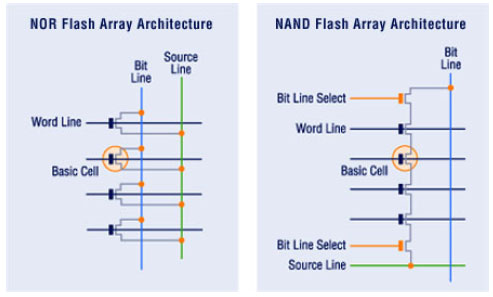内容简介 :
INTRODUCTION
The popularity of feature phones, camera phones, MP3 players, video-on-demand, and other
new applications is on the rise. In a saturated handset market, handset vendors are pushed by the
carrier’s desire to increase ARPU and by their own need to drive users to upgrade their handsets.
As a result, all handset manufacturers carry new data-centric devices offering rich multimedia
and productivity features aimed at savvy business customers and the “trendy” teenager segment.
Many of these devices have complex operating systems, large suites of applications and a large
amount of memory for user data. More and more, this memory is NAND flash-based as opposed
to NOR flash-based. But among the NAND solutions, there are many implementation
alternatives offering different merits and challenges.
WHY NAND IS BECOMING A MUST IN MOBILE PHONES
Two main technologies (Figure 1) dominate the non-volatile flash memory market today: NOR
and NAND. Until recently hardware engineers were unfamiliar with the differences between the
architectures of these two technologies, but this is no longer the case.

Figure 1: Comparing NOR and NAND Flash Architectures
While NOR offers eXecute In Place (XIP) capabilities and high read performance, it is expensive
per MB, thus mostly cost-effective in low capacities (1MB-4MB). Another disadvantage of NOR
is its extremely low write and erase performance. NAND architecture, on the other hand, offers
high cell densities and high capacity, combined with fast write and erase rates. But since it is
accessed in blocks of 512MByte (called pages) it cannot be used for XIP, has inherent bad
blocks and is prone to low reliability due to random errors generated by physical effects in the
geometry of the NAND gates.......